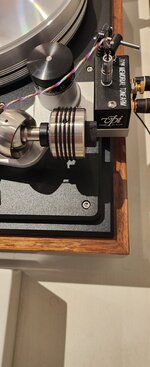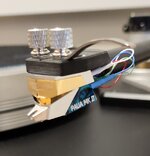If the world was a perfect place and all record spindle holes were perfectly centered mass would be less of a concern. As we know, a perfectly centered record is seldom achieved and that’s where the problems arise with heavier counterweights and heavier screws and inertia can be a problem. The less concentric the record the more side to side wiggles have to be dealt with by the cartridge assembly, as well as the groove walls of the record dealing with higher pressures as the stylus has to change direction with each non-concentric revolution.


